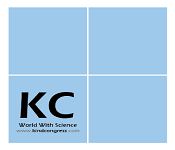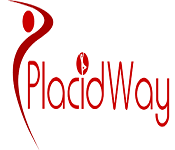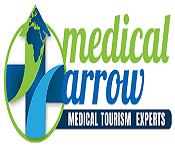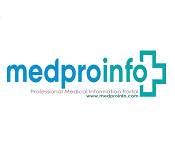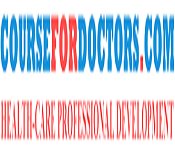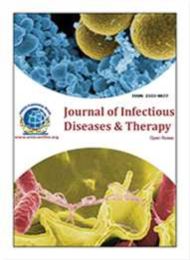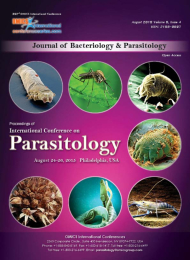Theme: Together to eradicate the term infection!!!
Infectious Diseases Conf 2020
- About Conference
- Sessions/Tracks
- Market Analysis
- Past Conference
- Infectious Diseases Associations & Societies
15th World Conference on Infectious Diseases, Prevention and Control scheduled on March 19-20, 2020 in Dubai, will give useful proof based methodologies to connect with the workforce and reduce the spread of intense healthcare-associated infections. Infectious Diseases Conf 2020 is to promote the health awareness which incorporates keynote meetings, symposiums, roundtable discussions, abstracts, poster presentations and workshops on Infection Prevention and Control, associated with infectious diseases. The objective is to bring together a multidisciplinary gathering to identify important issues relating to Infection Prevention and Control in Russia, Asia Pacific, the United States, Europe over the world. Particularly the boundaries to a wider recognition of the disease, and to develop a coordinated action plan.
Infectious Diseases Conf 2020 is an international platform for presenting research about Infectious Diseases, control and Therapy. It represents an increasingly important cause of human morbidity and mortality throughout the world. Vaccine development is thus of great importance in terms of global health.
Importance and Scope:
In the new bio-economy, Infectious diseases play a very important role in representing major global challenges, upgrading waste streams to valuable food ingredients, counteracting life-style diseases and antibiotic resistance through the gut biota, making crop plants more resistance to extreme climatic change conditions, and functioning as host for the production of new biological drugs for treatments of diseases.
Why to Attend?
Infectious Diseases Conf 2020 is giving a worldwide stage to analysts that afford new insights into the concealed methods of Infection Control. World-eminent speakers, guest of honours, and the most up to date upgrades are particular components of this gathering and with individuals from around the globe concentrated on finding out about uncommon illnesses and its advances; An expanding number of distinguished methods makes it important to complete propelled research here of irresistible sicknesses.
Target Audience
- Microbiologists
- Bacteriologists
- Virologists
- Parasitologists
- Mycologists
- Pathologists
- Pharmacists
- Epidemiologists
- Dermatologists
- Neurologist
- Ophthalmologist
- Cardiologist
- Health Care Professionals
- Academic Professionals
- Medical & Pharmacy Companies
- Students
- Researchers
- Research Associates
Track 1: Infection Treatment and Control
Contamination counterproductive action and control is required to keep the transmission of Infectious ailments in all social frameworks. These maladies are typically caused by microscopic organisms and can be spread by human to human contact, creature to human contact, human contact with a contaminated surface, airborne disease through little beads of uncontrollable operators suspended perceptible all around lastly, by such regular vehicles as water. Infection control and Counteractive action requests a basic comprehension of the study of disease transmission of maladies, by a little chance factors that expand quiet defencelessness to contamination, and the methodology where medicines that may bring about diseases.
Track 2: Vaccine Research & Development
Vaccine Development is a venture that focuses only on a variety of technological enterprise and applied research, which increase and promote improved systems and practices for vaccine safety. In the past year, the unpredictable Ebola disease outbreak research and industry response and as we continue to search for solutions, we must review the lessons learned in order to overcome the current challenges. Vaccines development is a long, complex process, often lasting 10-15 years and requires a combination of public and private involvement. The current system for enlarging, testing, and regulating vaccines which developed during the 20th century as the groups are involved regulates their procedures and regulations.
Track 3: Antimicrobial Drug Resistance (AMR)
AMR is said to be the ability of a microbe to withstand the effects of medication that once might successfully treat the microbe. The word antibiotic resistance (AR or ABR) is a detachment of AMR, as it relates only to the bacteria becoming resistant to antibiotics. Resistant microbes are more problematic to treat, requiring alternative medications or higher doses of antimicrobials. These methodologies may be more expensive, higher toxicity risk or both. Microbes resistant to numerous antimicrobials are called multidrug resistant (MDR). The classes of drug resistance are extensively drug- resistant (XDR) and totally drug- resistant (TDR).
Track 4: Neurological Diseases
Neurological infections are the disorders which are observed in the Brain. Viral and immune-mediated disorders of the nervous system are the most challenging neurological infections. The most common neurological disorders are multiple sclerosis and HIV. In spite of noteworthy advancements in the treatment of this kind, central nervous system (CNS) infections still remain a major challenge. They are frequently difficult to diagnose, and treatments are either insufficient or non-existent. Infections can be categorized as acute or chronic. In aspects of the nervous system is categorized to meningitis or the brain substance itself (encephalitis), or both of them (meningoencephalitis). Some infections that trigger an inflammatory reaction that causes neurological damage independently with the infection. In some inflammatory conditions, new issues may arise which might be related to the disease and infect and lowers the activity of CNS gradually.
Track 5: Information Technology and Innovation in Infectious Diseases
Facilitating innovation and access to health technologies remains a key strategy in combating infectious diseases in low- and middle-income countries (LMICs). However, a gulf between paying markets and the endemicity of such diseases has funded to the dearth of R&D in summit these public health needs. While the pharmaceutical industry views evolving economies as capable new markets, most of the world’s poorest bottom billion now resides in middle-income countries a fact that has complicated tiered access provisions. Residing, product expansion partnerships specifically those including academic organisations and small corporations find marketable prospects in pursuing even ignored infections and a developing pharmaceutical sector in BRICS countries offers hope for a native base of innovation.
Track 6: Pathogenic Infections
One of the commonly seen bacterial infections is tuberculosis with the utmost risk factor, affected by Mycobacterium tuberculosis bacteria, which kills about 1.5 to2 million people a year, frequently in sub-Saharan Africa. Pathogenic bacteria subsidize to other globally important diseases, which include pneumonia and foodborne illnesses. Pathogenic bacteria can also be the reason for the infections like tetanus, typhoid fever, diphtheria, syphilis, and leprosy. Pathogenic bacteria are also the reason of high infant mortality rates in developing countries.
Track 7: Blood Infections
Micro-organisms can cause infection in human blood and diseases are known as blood borne pathogens. The most common and dangerous germs spread through blood within the hospital are viral hepatitis B and hepatitis c virus. These viruses cause infections and liver injury. This virus causes AIDS. Organisms such as bacteria, viruses, prions, and parasites will be transmitted through blood transfusions.
Track 8: Gastrointestinal & Urinary Tract Infections
Gastrointestinal and Urinary Tract contaminations are viral, bacterial or parasitic diseases. Gastrointestinal Infection causes gastroenteritis, an irritation of the gastrointestinal tract including both the stomach and the small digestive tract .Gastrointestinal contaminations can be brought about by an extensive number of microorganisms, including Adenovirus, Campylobacter, Clostridium difficile, Escherichia coli and Urinary Tract Infection characterizes that your bladder and kidneys and the cylinders that interface them. At the point when germs get into the body they can cause a contamination. The greater part of the urinary tract contaminations (UTIs) are bladder diseases.
Track 9: Infections During Diabetes
In commonly spreading infectious diseases are more frequent and serious in patients with diabetes mellitus, which naturally increases their morbimortality. The superior incidence of infections in diabetic patients is caused by the hyperglycaemic environment that favour’s immune dysfunction, micro- and macro-angiopathies, neuropathy negotiate the antibacterial activity of urine, gastrointestinal and urinary dysmotility, and increase the chances of medical complications in these patients.
Track 10: Respiratory Tract Infections
The class of infections caused in the tract involved in the respiration process, starting from the nose including the respiratory organs there are many sorts of infections which are further categorised into, Upper respiratory tract infections, i.e. Nasal obstruction, sore throat, tonsillitis, pharyngitis, laryngitis, sinusitis, otitis media, and the cold sores are commonly seen and Lower respiratory tract infections, i.e. Bronchitis and edema are commonly seen. Air pollution may be one of the common causes for many of the respiratory tract infections. These may be life threatening infections in acute conditions.
Track 11: Imaging of Infections with Next Generation Microscopy
By the development of metabolic and infection imaging it has been routine process, as it shows the accurate and most valuable information of the infection site, type and resistance, which interne helps in treating efficiently, with the known cause and specificity. But in direct identification of infection in the body without any externally observed abnormality. But by using the cross sectional imaging technique and imaging the sedimentation of radioisotopes that have been settled into white blood cells or glucose. Biologic imaging is useful in discovering the anatomic sites where there is inflammation or high metabolic demand. However, a drawback of biologic imaging is that it is not specific for infection.
Track 12: Fifth Disease
Fifth disease is a mellow rash infection produce by parvovirus B19. This disease is also called as erythema infectiosum. It is mostly common in children than adults. A person commonly gets sick with fifth disease within four to 14 days after getting infected with parvovirus B19. The major symptoms of fifth disease are usually mellow and may involve fever, running nose, and headache. This disease is contagious because the rash is due to an immune system reaction that happens after the infection has passed. Anyone with fifth disease is most communicable before the rash appears. This disease is caused by a virus, so it can't be treated with antibiotics. In most cases, it is a mild illness that clears up on its own and no medicine is needed.
Track 13: Bacterial and Viral Infectious diseases
A bacterial infection is a rapid growth of a harmful strain of bacteria on or inside the body. Harmful bacteria can cause a few illnesses like pneumonia, meningitis, and food poisoning. Bacterial infections are one of the main causes of foodborne illness. Common symptoms include nausea, vomiting, diarrhoea, fever, chills, fatigue and abdominal pain. Most of the sexually transmitted diseases (STDs) are caused by harmful bacteria. Most of the times they are not related to any symptoms of the disease but still can cause significant damage to the reproductive system. Bacterial skin infections are generally caused by gram-positive strains of bacteria such as Streptococcus and Staphylococcus. Some of the bacterial infections include boils, impetigo, and folliculitis. Viruses are like hijackers. This can slaughter, damage, or change the cells and make sick. Different viruses attack certain cells in the body such as the liver, respiratory system, or blood.
Track 14: Pediatric Infections
Pediatric infectious diseases are the category of transmittable diseases which are caused in children less than 8 years of age. Paediatrician deal with the infections occurring in children and the treatment method fluctuates from children to adults. The commonly categorised disorders are Pneumonia- diagnosed in nearly 2% of infants < 1 year and in 4% of children aged 1 to 5 years. It is estimated that 90% of Pediatric pneumonia are caused by viral agents. Other infections also include Otitis Media which is caused in children who live with the adults who smoke.
Track 15: Veterinary Infectious Diseases
Infectious diseases of livestock are globally a major threat to animal health and welfare and their proper control is important for agronomic health, for protecting and national and international food supplies and for mitigating rural poverty in developing countries. Animal diseases constitute an important threat to human health since the rise of human diseases is dominated by zoonotic pathogens. Zoonotic contaminants that are transmissible either directly or indirectly between animals and humans are on the expansion or posture noteworthy threats to human health and the present pandemic status of new influenza A (H1N1) is a typical case of the test displayed by zoonotic infections. Veterinary scientists commonly combine with epidemiologists.
Infectious Diseases Diagnostics Market
The market for infectious disease molecular diagnostics tests incorporates reference research centres, hospitals, blood banks. Size is predicted to grow at 9.42% CAGR from 2018 to 2023 and it is determined that the Middle East and Africa market was valued at USD 1.35 billion in 2018 and is depended upon to accomplish USD 2.12 billion by 2023. Diagnostics of the Infectious disease includes a different technique to check for the presence of a foreign antigen/organism with the assistance of numerous diagnostic tools. Conditions of the Infectious disease are highly widespread in undeveloped regions due to the lack of awareness for cleanliness, minimal health care expenditures, and absence of effective physician services. Rising instances of infectious diseases in developed economies are additionally expected to help the market development. This has resulted in vitro diagnostic gadget makers to invest in emerging countries. These organizations are making efforts to develop and popularise cost-effective tools for the diagnosis of infectious diseases.
Disease diagnostics are utilized for are utilized for in form of a quick, precise test result. Disease diagnostics are on a rise even if it is time-consuming. The infectious disease epidemics are spreading around the world, thereby increasing the demand for diagnostic tests. Additionally, the occurrence of AIDS, malaria, and other diseases are also on increase, creating a vigorous demand for infectious disease diagnostics. Many government-financed programs all over the globe are progressively providing free screening and tests in order to increase awareness, precisely diagnose diseases, and limit the chances of infection. Such activities are foreseen to help the market development in the following couple of years. However, diagnostic kits are highly priced and manufacturers still have a poor assortment channel for working across emerging economies. These two components are anticipated to be the key difficulties to rapid revenue growth of the global infectious diseases diagnostics market.
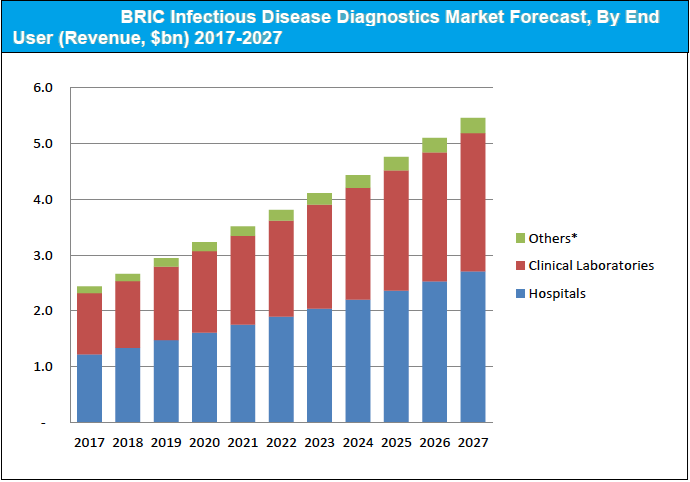
Recent Outbreak (Zika virus):
Zika virus is the major occurring from many countries. It is affected to people primarily through the bite of an infected Aedes species mosquito (Ae. aegypti and Ae. albopictus). Zika can also be passed through sex from a person who has Zika to his or her sex partners and it can also spread from a pregnant woman to her fetus. The National Institutes of Health, USA started to workout in Zika vaccine from September. Depending on the results, larger trials could begin at the start of 2019. Up to date, 2015-16 total 69 Zika Virus cases reported with 16 live born infants with birth defects and 5 total pregnancy losses with birth defects.
Infectious Diseases Therapeutic Market
The Middle East and Africa Infectious Disease Therapeutics Market accounts for USD 8.42 Billion in 2018 and assessed to achieve 12.29 USD Billion by the end of 2023 with a developing potential of 7.877 %. The Middle East and Africa Infectious disease therapeutics market are categorized based on Mode of treatment into Drugs and Vaccines. The drugs are further segmented into oral administration, topical, injections and others. Based on the target organism the market is categorized into antibacterial, antifungal, antiviral, antiparasitic and others. Based on infection type the market is categorized into Bacterial, viral, fungal, parasite and others. Based on distribution channels the market is categorized into hospitals, clinics and others. Based on Geography, the Middle East and Africa Infectious disease therapeutics market is analyzed under various regions namely the Middle East and Africa. The global infectious disease therapeutics market size was valued at USD 46.88 billion in 2016 and is projected to grow at a CAGR of 6.6% during the forecast period.
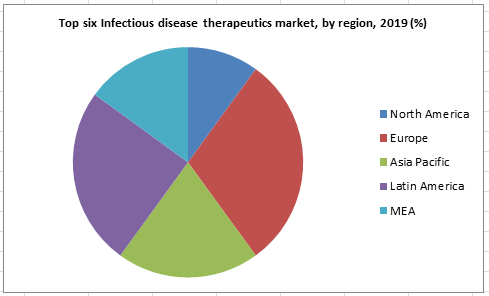

Infectious Diseases Conf 2019 Report
We glad to thank all our wonderful Speakers, Conference Attendees, Students, Media Partners, Associations and Sponsors for making Infectious Diseases Conf 2019 Conference the best ever!
The 14th International Conference on Infectious Diseases, Prevention and Control, hosted by the Conferenceseries LLC ltd was held during March 21-22, 2019 at Dubai, UAE based on the theme “Towards a world free from the threat of Infectious diseases". Gracious response and active participation was received from the Organizing Committee Members along with Scientists, Researchers, Students and leaders from various fields of Microbiology, Infectious Diseases, Pathology, Immunology who made this event a grand success.
Conferenceseries LLC ltd expresses its gratitude to the conference Moderator Bhaskar Rajakumar namely for taking up the responsibility to coordinate during the sessions. We are indebted to your support.
Very special thanks to our Sponsors to have bestowed and their faith and invested in us to make this event a fruitful one. We hope you continue your support in our future endeavours.
The conference was initiated with the Honourable presence of the Keynote forum. The list includes:
- Mohamad Miqdady, Sheikh Khalifa Medical City, UAE
- Zulfiqar Ahmad, A T Still University, USA
The conference reflected various sessions, in which discussions were held on the following major scientific tracks:
- Infectious Diseases and Vaccines
- Mechanism of Resistance
- Drug Interaction in Infectious Diseases
- Immunology of Infection
- Bacterial Infections
- Viral Infections
- Fungal Infections
- Foodborne and Waterborne Infections
- Respiratory and Blood Stream Infections/ Bacteraemia / Blood Poisoning
- Dental and Oral Infectious Diseases and Control
- Dermatological Infectious Diseases and Control
- Nosocomial or Hospital Acquired Infection and Control
- Pediatric/ Childhood Infectious Disease
- Sexually Transmitted Diseases and Control
- Plant Infectious Diseases
- Veterinary/Animal Infectious Disease
- Ophthalmological Infectious Diseases
Conference Series LLC ltd offers its heartfelt appreciation to organizations such as Media partners- Crowd reviews, Kind Congress, The Pharma Times, Tabbeby, Medical events Guide, Clocate, Course for Doctors, Medgate Today, GBi, Vydya health, Lanka Lion, Plus ninety one, International Journal of Life science and Pharma Research, Venue Dir, International Journal of Pharma and Bio science and Collaborators like Antibody resource, Global Sepsis Alliance, PAAIS and other eminent personalities who supported the conference by promoting in various modes online and offline which helped the conference reach every nook and corner of the globe. Conference Series LLC ltd also took privilege to felicitate the Keynote Speakers, Organizing Committee Members, Chairs and sponsors who supported this event
With the grand success of Infectious Diseases Conf 2019, Conference Series LLC ltd is proud to announce the "15th International Conference on Infectious Diseases, Prevention and Control " to be held during March 19-20, 2020 in Dubai, UAE.
For More details visit: https://infectious-diseases.conferenceseries.com/
-
International Society of Antimicrobial Chemotherapy (ISAC)
-
Emirates Medical Association (EMA)
-
UAE Rare Disease Society
-
Emirates Neurology Society
-
Royal Health Awareness Society
-
International Society for Infectious Diseases
-
Infectious Diseases and Clinical Microbiology Specialty Society of Turkey
-
Bulgarian Association for Prevention and Infection Control
-
Nordic Society of Clinical Microbiology and Infectious Diseases (NSCMID)
-
European Society for Clinical Virology (ESCV)
-
Turkish Society of Clinical Microbiology Infectious Diseases (KLIMIK)
-
French Society of Microbiology (SFM)
-
Albanian Society of Infectious Disease (SHSHI)
-
Danish Infectious Disease Society
-
Swedish Society of Clinical Microbiology (FKM)
-
French Infectious Disease Society (SPILF)
-
German Society of Infectious Diseases (DGI)
-
Scottish Microbiology Association (SMA)
-
Infection Prevention Society (IPS)
-
Swedish Society of Infectious Diseases
Conference Highlights
- Infection Treatment and Control
- Vaccine Research& Development
- Antimicrobial drug resistance (AMR)
- Neurological diseases
- Blood Infections
- Gastrointestinal & Urinary Tract Infections
- Pediatric Infectious Diseases
- Fifth Disease
- Veterinary Infectious Diseases
- Bacterial and Viral Infectious diseases
- Imaging of infection with next generation microscopy
- Information Technology and Innovations in Infectious Diseases
- Pathogenic Infections
- Infections during diabetes
- Respiratory tract infections
To share your views and research, please click here to register for the Conference.
To Collaborate Scientific Professionals around the World
| Conference Date | March 19-20, 2020 | ||
| Sponsors & Exhibitors |
|
||
| Speaker Opportunity Closed | Day 1 | Day 2 | |
| Poster Opportunity Closed | Click Here to View | ||
Useful Links
Special Issues
All accepted abstracts will be published in respective Our International Journals.
- Journal of Infectious Diseases & Therapy
- Air & Water Borne Diseases
- Journal of Bacteriology & Parasitology
Abstracts will be provided with Digital Object Identifier by


